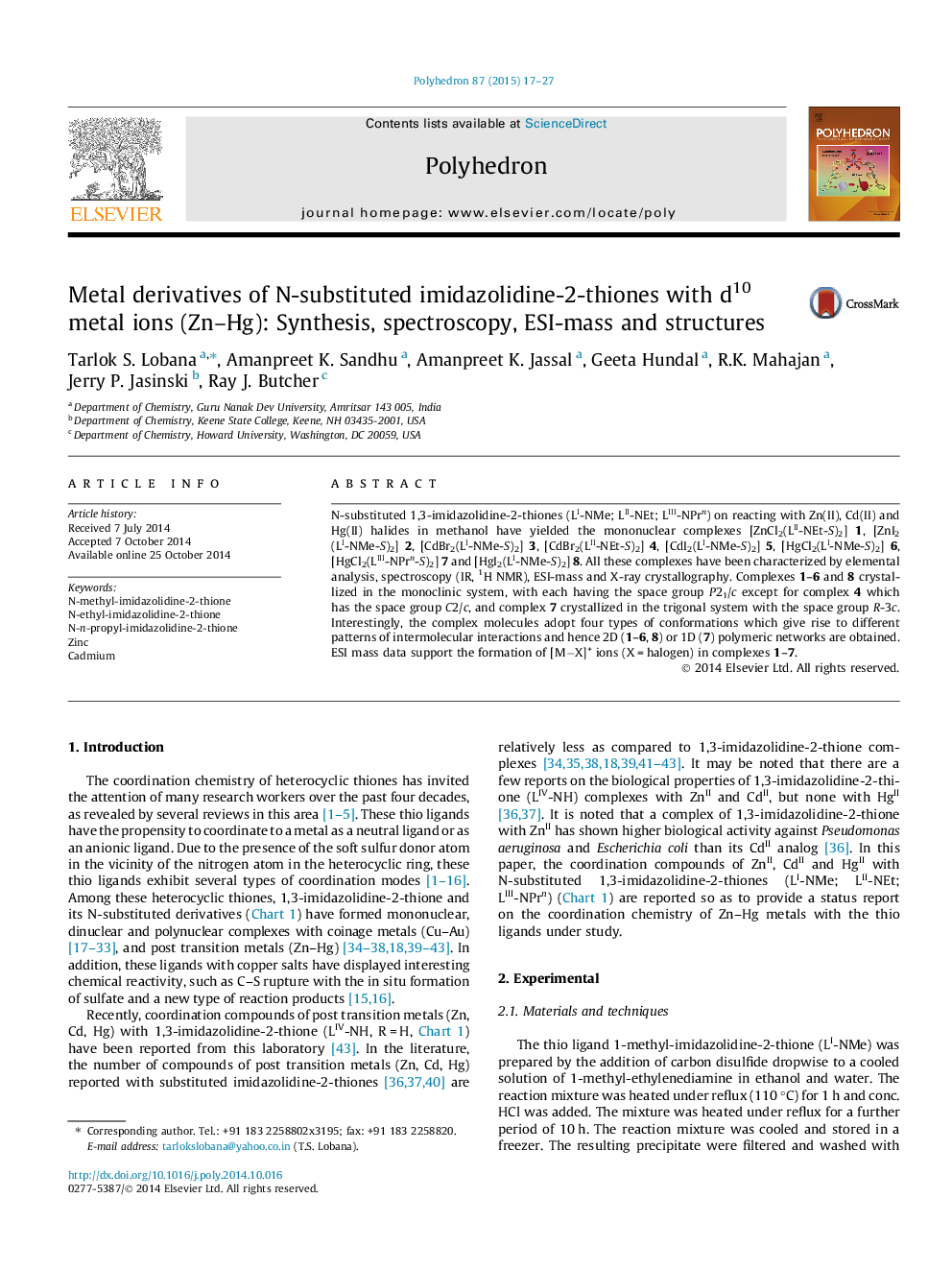| Article ID | Journal | Published Year | Pages | File Type |
|---|---|---|---|---|
| 1337334 | Polyhedron | 2015 | 11 Pages |
N-substituted 1,3-imidazolidine-2-thiones (LI-NMe; LII-NEt; LIII-NPrn) on reacting with Zn(II), Cd(II) and Hg(II) halides in methanol have yielded the mononuclear complexes [ZnCl2(LII-NEt-S)2] 1, [ZnI2(LI-NMe-S)2] 2, [CdBr2(LI-NMe-S)2] 3, [CdBr2(LII-NEt-S)2] 4, [CdI2(LI-NMe-S)2] 5, [HgCl2(LI-NMe-S)2] 6, [HgCl2(LIII-NPrn-S)2] 7 and [HgI2(LI-NMe-S)2] 8. All these complexes have been characterized by elemental analysis, spectroscopy (IR, 1H NMR), ESI-mass and X-ray crystallography. Complexes 1–6 and 8 crystallized in the monoclinic system, with each having the space group P21/c except for complex 4 which has the space group C2/c, and complex 7 crystallized in the trigonal system with the space group R-3c. Interestingly, the complex molecules adopt four types of conformations which give rise to different patterns of intermolecular interactions and hence 2D (1–6, 8) or 1D (7) polymeric networks are obtained. ESI mass data support the formation of [M−X]+ ions (X = halogen) in complexes 1–7.
Graphical abstractSubstituted imidazolidine-2-thiones with d10-metal ions (Zn–Hg) have yielded distorted tetrahedral complexes. ESI-mass studies have shown the formation of [M−X]+ ions (here M represents the molecular ion). The molecular structure of 1 is shown in pictogram.Figure optionsDownload full-size imageDownload as PowerPoint slide
